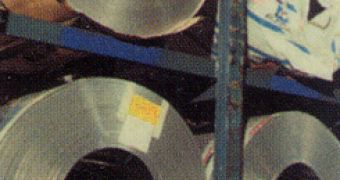Robin Gremaud, a PhD student from the Vrije Universiteit in Amsterdam, The Netherlands, has come up with a special alloy that has an impressive quality in terms of absorbing hydrogen. The light alloy is made of a certain combination of the metals titanium (Ti), magnesium (Mg) and nickel (Ni), and it could provide a starting point to a new approach on using hydrogen as fuel, especially in cars. Its lighter weight demonstrates its superiority over electric batteries used as fuel providers, as a tank built of the alloy would be 40% lighter than a battery pack.
Hydrogen is regarded as a clean fuel, but speculations on its usage in the future are prevented by the storage method solutions for it, and by the lack of a more efficient way in which it should be used (the existing technology is still rudimentary). The gas can act directly as a fuel in the internal combustion process (such as is the case with the BMW hydrogen vehicles), but it could also be transformed into electricity within fuel cells, and used indirectly for powering the car, as Amsterdam's Citaro buses are doing.
Still, since the hydrogen gas is highly explosive, the matter of coming up with an efficient, light and safe container for hydrogen-fueled vehicles proves all the more difficult. Experts have indicated that a way of sidestepping this issue would be to use gas-absorbing metals, although it would render the containers rather heavy, although not as heavy as the alternative of electric batteries. For a 400 km-long ride with an electric vehicle like Toyota Prius, it would take 317 kilograms of lithium batteries to provide the required energy.
This is where Gremaud's alloy comes into the equation, as a tank of that material weighing only 200 kg would do the job. Sure, it's still much, but it's better than batteries, and the numbers could be improved with time. Gremaud discovered his alloy by using a technique that allowed him to test thousand of combinations of the three metals at the same time, a method that British company Ilika seems to be very interested in.

 14 DAY TRIAL //
14 DAY TRIAL //